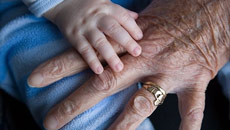In what could be relevant to eye-witness testimony or neuro-psychological rehabilitation, a study has found that we can only see two faces in a crowd even if the faces belong to famous people.
“People recognise faces automatically as long as they have sufficient capacity to do so, but not when this ability is stretched by the presence of too many faces,” said Volker Thoma of University of East London in Britain.
For the study, the researcher set up two experiments in which participants were asked to identify a famous politician such as Tony Blair and Bill Clinton or pop stars such as Mick Jagger and Robbie Williams from among other unfamiliar faces.
In both cases, a distractor face was placed to the side of the screen, but participants were asked to ignore it.
In the first experiment, the famous face was shown at the vertical centre of the computer screen - either on its own or among one or two unknown faces.
Participants had to quickly respond to whether it was a famous politician or singer.
Despite being asked to ignore the unknown face on the periphery, its presence still influenced participants’ ability to recognise the famous face, showing that faces are hard to ignore.
However, when more faces were shown in the centre - making it harder to find Mick Jagger - participants did not notice the irrelevant face anymore.
This indicates that humans can only deal with and process a few faces at a time, whether they are well known or not, Thoma explained.
Similar results were found in the second experiment when the additional faces surrounding the famous person’s photograph were shown upside down.
It was previously thought that upside down faces are not perceived as individual faces, but more like objects.
One would have therefore expected the famous face to stand out, but it did not.
“Face recognition seems to be limited to the amount of face-specific resources or parts, and even happens when other faces are shown upside down,” Thoma maintained.
The study appeared in the journal Psychonomic Bulletin & Review.





